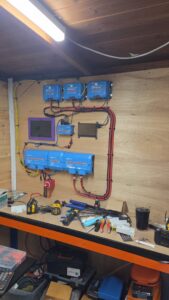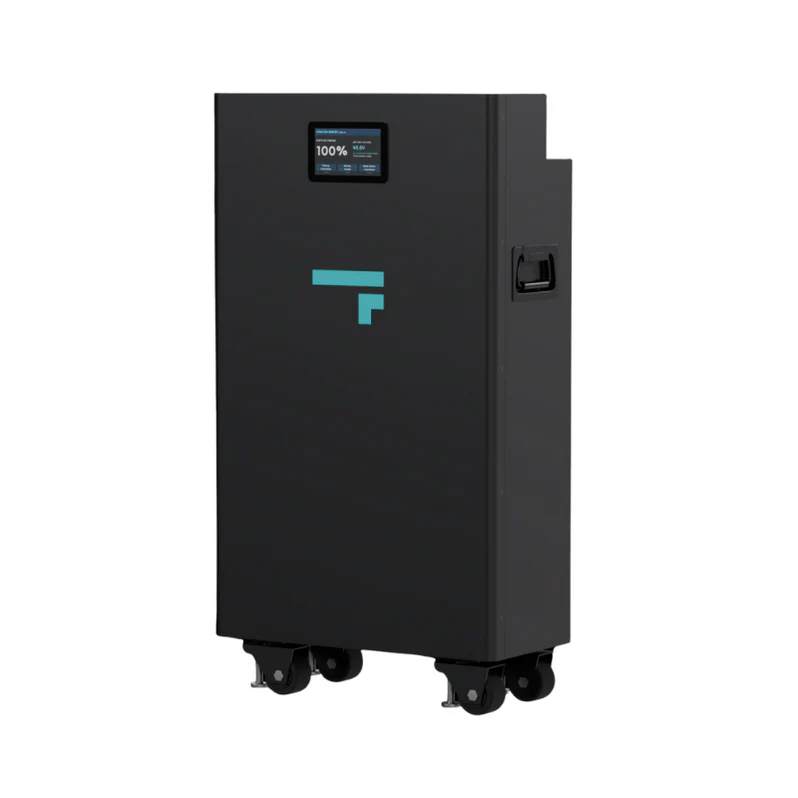Introduction
Now let’s delve into a completely logical topic: a testimonial of a functional battery.
Imagine this scenario – picture me beneath my handcrafted pergola, feeling like a satisfied backyard innovator, observing eight dazzling 440 W solar panels and thinking, “This is the pinnacle of renewable success.” The Victron Multiplus 5000 48 V setup softly buzzed in the shed – my private energy hub, my shrine of electrical power. For a brief, splendid moment, everything seemed flawless.
Then, winter arrived. The 8 X 100 Ah Eco Worthy LiFePO₄ batteries, supposedly delivering 10 kWh, began to act like a disorganized choir, with each cell believing it hit the right pitch while the others fell off-key. They wandered, sulked, and requested recalibration every few days. To make matters worse, there was no insight into cell deterioration, no State of Health (SOH) details, and absolutely no transparency. It felt akin to driving a fleet of cars with no dashboards and covered headlights.
Naturally, I responded as any resourceful experimenter would – by introducing battery balancers, a pricey Victron Lynx Smart BMS, and an abundance of cables. The outcome appeared impressive, resembling something that Frankenstein might concoct if he possessed an electrical engineering diploma, yet it operated like a steampunk octopus grappling with an existential crisis. Despite its luxurious price tag, the Victron Lynx Smart BMS supplied ambiguous details, minimal diagnostics, and as much clarity as a fogged multimeter. It exuded an air of “premium” while muttering “guesswork.”

At that juncture, I reached my limit. I yearned for uniformity, dependability, and rationality. I sought a solution that didn’t demand constant monitoring to remain functional. Thus, my pursuit commenced, armed with an electrician’s screwdriver and a well-worn, self-assembled laptop. I dedicated nights, days, and caffeine-fuelled weekends scouring through data sheets and specifications, seeking the ideal battery that could satisfy my engineering passion without draining my finances or necessitating the GDP of a small nation to acquire.
It needed to be forthright, trustworthy, and supported by a warranty that was straightforward instead of filled with corporate jargon. It needed to deliver results, not just make promises. That’s when I chanced upon the Fogstar 16.1 kWh 48 V Solar Battery, and for once, the figures, the technical details, and the practical performance all aligned perfectly.
The Specifications
Choosing the correct tool for the job isn’t easy when the internet is overflowing with digital manure. Every corner of the web is packed with self-appointed experts some half-wit on TikTok waving a discount code and claiming to be a “solar engineer” after six months of influencer enlightenment. They’re armed with a ring light, a prewritten sales script, and the confidence of someone who’s never held a multimeter.
That’s not how the real world works. Real systems aren’t filtered through marketing gloss; they’re measured in voltage, current, and reliability over time. A battery isn’t “great” because someone shouted about it over background music it’s great because it maintains balance under load, communicates clearly with your inverter, and doesn’t dissolve into a pile of error codes when the temperature drops below ten degrees.
So when I began analysing the Fogstar 16.1 kWh 48 V solar battery, I wasn’t chasing buzzwords or hype. I wanted measurable engineering truth—specifications that meant something, components that justified their cost, and a warranty that wasn’t written in vanishing ink. Fogstar delivered exactly that. Built to industrial-grade standards, not consumer fantasy, it offers full transparency from the first amp-hour to the last.
Here’s what sits under the hood:
- 16 x premium MB31 Grade A EVE LiFePO4 cells
- Pace 200 amp hour BMS
- 2A JK Active Balancer
- 250A DC Breaker
- 5” Touch Screen
- 2 Positive, 2 Negative 8mm Battery Connection Terminals
- Built in Active Heater
- Rated Voltage (V) 51.2V
- Maximum Charge (V) 57.6V
- Maximum Charge Current (A) 200A
- Total Wh 16,076.8
- Maximum Discharge 200A
- Discharge Cut-off Voltage 43.2V
- Discharge Temperature -20°c to 60°c
- Charging Temperature -20°c to 45°c (heater enabled)
- Storage temperature range:
– 1 Month: -20 °C to 60 °C
– 3 Months: -10 °C to 40 °C
– 1 Year: -5 °C to 20 °C - Cell Configuration 16S1P
- Cycle Life 8,000 @ 80% DOD
- Communication Ports CAN, RS485, RS232
- Design Life 15 years
- Weight 140kg
- Preloaded Inverter Protocols Compatible with multiple LV inverters, including Sunsynk, Solis, Victron and more.
- UK Backed Warranty @ 10 years
In short – it’s the antithesis of influencer junk. This is a serious battery, engineered for people who build, test, and live their systems not film them.
Page 2 -> Order Mistakes, Support, Delivery and Installation


Leave a Reply